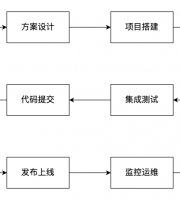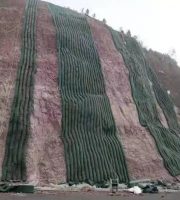According to the forming environment, it can be divided into lake asphalt, rock asphalt, seabed asphalt, oil shale, etc.

Classification of asphalt pavement 2.1 according to the strength composition principle, it is divided into two categories: dense type and embedded type.
Seal coat: a thin layer of asphalt mixture with a certain thickness paved on the asphalt surface course or base course to close the surface gap and prevent moisture intrusion.
(1) The gradation of mineral aggregate for dense asphalt pavement is designed according to the principle of maximum compactness, and its strength and stability mainly depend on the cohesion and internal friction of the mixture..
In wet sections, the soil foundation and base course are prone to become soft, resulting in pavement damage.
Asphalt stabilized macadam mixture (hereinafter referred to as asphalt macadam) is a mixture composed of mineral aggregate and asphalt with certain grading requirements, which is divided into dense graded asphalt macadam (ATB), open graded asphalt macadam (OGFC surface course and ATPB base course), semi open graded asphalt macadam (AM) asphalt mastic macadam mixture by asphalt binder and a small amount of fiber stabilizer The asphalt mastic composed of fine aggregate and a large amount of filler (mineral powder) is filled in the gap of the coarse aggregate skeleton with discontinuous grading to form an integrated asphalt mixture, referred to as SMA.
important terms and characteristics of asphalt pavement 1.1 important terms of asphalt pavement asphalt binder: the general term of asphalt materials (including added admixtures, modifiers, etc.) that play a cementation role in asphalt mixtures.
(3) The water permeability of the asphalt surface course is small, which makes it difficult to drain the water in the soil foundation and base course.
Modified emulsified asphalt: emulsified asphalt products obtained by adding polymer latex during the production of emulsified asphalt, or mixing polymer latex with emulsified asphalt products, or emulsifying polymer modified asphalt.
Slurry seal coat: the asphalt seal coat is formed by evenly spreading the flowing asphalt mixture formed by mixing properly graded stone chips or sand, filler (cement, lime, fly ash, stone powder, etc.) with emulsified asphalt, admixture and water in a certain proportion.
Liquid asphalt: the asphalt product made by diluting petroleum asphalt with gasoline, kerosene, diesel and other solvents, also known as light asphalt or diluted asphalt.
Semi open graded asphalt macadam mixture: it is a semi open asphalt macadam mixture (shown in AM) composed of appropriate proportion of coarse aggregate, fine aggregate, a small amount of filler (or no filler) and asphalt binder, and the residual void ratio of Marshall standard compacted specimen is 6% ~ 12%.
Asphalt aggregate ratio refers to the percentage of asphalt to mineral aggregate mass ratio in asphalt concrete.
Those paved on the surface of the asphalt surface course are called the upper seal course, and those paved below the asphalt surface course and on the base course surface are called the lower seal course.
Asphalt mixture: the general name of the mixture formed by mixing mineral aggregate and asphalt binder.
Natural asphalt: petroleum asphalt in natural state, which is formed by the long-term compression and change of the earth’s crust and the gradual change of the oil in contact with air and water, is often mixed with a certain proportion of minerals.
Disadvantages: (1) it is a flexible pavement, and its strength and stability largely depend on the characteristics of soil foundation and base; Low bending strength; (2) Easy to shrink and crack at low temperature The anti deformation ability is very low.
Tack coat: a thin layer of asphalt material sprayed to strengthen the bonding between the asphalt layer and the asphalt layer, and between the asphalt layer and the cement concrete pavement.
In order to prevent the asphalt pavement from cracking due to uneven frost heave of soil foundation in cold areas, it is necessary to set an anti freezing layer.
2.
Prime coat: a thin layer penetrating into the surface of the base course at a certain depth formed by spraying liquid petroleum asphalt, emulsified asphalt and coal asphalt on the base course to ensure a good combination between the asphalt surface course and the base course of non asphalt materials.
If the asphalt stone ratio is large, the pavement is easy to be oily, otherwise, it will affect the strength and waterproof effect.
Discontinuous graded asphalt mixture: the asphalt mixture formed due to the lack of one or several grades (or a small amount) in the mineral aggregate grading composition.
(4) Rutting is easy to occur at high temperature.
According to material composition and structure, it is divided into continuous graded and intermittent graded mixtures, and according to mineral aggregate grading composition and void ratio, it is divided into dense graded, semi open graded and open graded mixtures.
Emulsified asphalt: a uniform asphalt product, also known as asphalt lotion, prepared by emulsifying petroleum asphalt and water under the action of emulsifier, stabilizer, etc.
According to the size of the nominal maximum particle size, it can be divided into extra coarse type (the nominal maximum particle size is equal to or greater than 31.5mm), coarse type (the nominal maximum particle size is 26.5mm), medium type (the nominal maximum particle size is 16 or 19mm), fine type (the nominal maximum particle size is 9.5 or 13.2mm), sand type (the nominal maximum particle size is less than 9.5mm) asphalt mixture.


1.
Its dosage directly affects the pavement quality.

Open graded asphalt mixture: the mineral aggregate gradation is mainly composed of coarse aggregate, less fine aggregate and filler, and the designed void ratio is 18%.
Modified asphalt: asphalt binder made by adding rubber, resin, high molecular polymer, natural asphalt, ground rubber powder or other materials to improve the performance of asphalt or asphalt mixture.
It is one of the indicators of asphalt dosage.
1.2 basic characteristics of asphalt pavement structural advantages and disadvantages of asphalt pavement 1.2.1 structure of asphalt pavement AC dense graded asphalt concrete mixture, coarse and fine ATB dense graded asphalt stabilized macadam mixture.
Hot mix asphalt mixture shall be divided according to the manufacturing process; Cold mix asphalt mixture; Recycled asphalt mixture, etc.
Compared with cement concrete pavement, asphalt pavement has the advantages of flat surface, no joints, comfortable driving, wear resistance, low vibration, low noise, short construction period, simple maintenance and repair, and is suitable for construction by stages.





